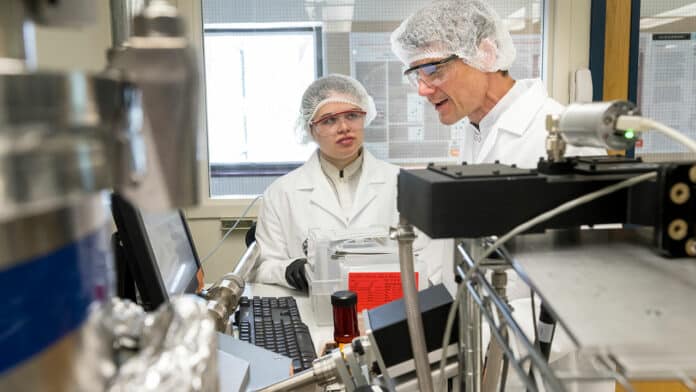A data center consists of physical or virtual servers connected internally and externally through networking and communication devices to store, transfer and access digital information.
Due to the rise of many companies, including Facebook, Amazon, Microsoft, and Google, and the large amount of data they produce, there are many data centers. Data centers typically use a lot of energy to maintain their servers.
Researchers at Oregon State University and Baylor University have discovered a novel way to reduce the energy consumption of the photonic chips used in data centers and supercomputers.
A new ultra-energy efficient method involves compensating for temperature variations that degrade photonic chips.
The electronic chip in photonic chips uses photons rather than the electrons that course through traditional computer chips. By traveling at the speed of light, photons enable data to be transmitted quickly and energy-efficiently.
The photonics industry relies on thermal heater components to improve the operating wavelength of high-speed, electro-optic devices and optimize their performance.
These thermal heaters consume a few milliwatts of electricity per device.
The main issue with photonic chips is that up until now, to keep their temperature stable and performance high, it needs a significant amount of energy. However, researchers have shown that reducing the energy required for temperature control by over 1 million is possible.
Researchers made working prototypes showing temperature can be controlled via gate voltage, which means using virtually no electric current.
“That might not sound like much considering that a typical LED lightbulb uses 6 to 10 watts,” Alan Wang, a former Oregon State colleague, said. “However, multiply those several milliwatts by millions of devices, and they add up quickly, so that approach faces challenges as systems scale up and become bigger and more powerful.”
“Our method is much more acceptable for the planet,” John Conley, OSU College of Engineering, added. “It will one day allow data centers to keep getting faster and more powerful while using less energy so that we can access ever more powerful applications driven by machine learning, such as ChatGPT, without feeling guilty.”
Journal reference:
- Wei-Che Hsu, Nabila Nujhat, Benjamin Kupp, John F. Conley Jr & Alan X. Wang. On-chip wavelength division multiplexing filters using extremely efficient gate-driven silicon microring resonator array. Nature Scientific Reports, 2023; DOI: 10.1038/s41598-023-32313-0
